
Ohlone Park East Improvements : Less is Best
Comments to the 2021 City of Berkeley public scoping process regarding "Improvements" to Ohlone East Park East Ohlone Park East Improvements: Less is Best Ohlone Park East (OPE) is an isolated portion of the greater Ohlone Park area, running the length of Hearst between Milvia and Bonita. This small parcel occupies 15% or less of the total Ohlone Park area, and is partitioned from Ohlone Park West by the North Berkeley Senior Center and the fast-moving commuter traffic along Martin Luther King, Jr. Way. Although the City of Berkeley purports to preserve open space, its recent proposal to reconfigure Ohlone Park East will actually diminish its park space, robbing most user groups of open space and features that they now enjoy and use on a frequent basis. User groups The area surrounding OPE represents a part of the flatlands community that has historically been underserved in terms of open park space. It was only in the aftermath of the BART construction in the late 1970s that space was afforded for both the eastern and western Ohlone parks and the North Berkeley Senior Center. Despite Berkeley’s boasts of preserving open public space, our “smart growth” policies rarely, if ever, create more public parkland in or near the downtown area. However, the high-density policies in the downtown and the ever-increasing number of students at UC Berkeley have generated a steady demand for more recreational areas that include open park spaces.
During weekdays and weekends, the grass field is the central attraction. Like most other parks, the field’s activities include baseball, soccer, frisbee, and of course, picnics and parties. Over the last two decades, this open field has become a much-used and much-needed neighborhood resource. Maintaining OPE’s grass field should be of the highest priority. This is why the planners should be tasked with designing a usable shared space instead of an oversized tot-lot. Park Management If truth be told, OPE needs very little rearrangement or additions to its current configuration. What this small park does need is a long-term commitment by the City to take better care of this existing neighborhood resource. No matter what is finally decided regarding the current OPE proposals, better maintenance and a sustainable landscape are the most important factors for the park’s improvement and the enjoyment of its users. Unlike most Berkeley parks, OPE has been subjected to a harsh policy of landscape neglect. More than a decade ago, trees lined the northern border of the park as they do today throughout Ohlone Park West. Those trees provided shade and helped screen the backyards of the adjoining houses while suppressing the noise of the park activities from the neighbors. Since then, the City’s Parks Division has systematically removed nearly all the plants and trees in OPE. This loss of foliage has created a “ghettoized landscape” of chain-link fences and bare earth. In contrast, Ohlone Park West has hundreds of trees in and bordering the park. This disparity reflects how marginalized and neglected Ohlone Park East has become. The resulting deterioration of the park’s appearance has now become the main justification for this improvement effort. It certainly has convinced part of the public to buy into to what has become an oversized project. Perhaps the upside of this process for Berkeley is that the City will receive praise for “fixing” the very problem they created through their lack of funding and attention. Features like the proposed garden(s), senior area and a children’s obstacle course are not likely to be well-maintained in the long haul, given the park’s history. Even more important, the current proposals will consume too much of the grass field, the most precious commodity of this park. The City of Berkeley does not seem to understand how the neglect and mismanagement of landscaping shapes the community’s overall sense of the park. Nor is there any recognition of how negatively this has impacted all of the nearby residents. If the appearance of the park was better managed, this would enhance the perceptions and appreciation of Ohlone Park East. It would also help change the problematic behavior of some of those using the park while promoting greater use of the park. This is something money just can’t buy, but which our neighborhood deserves. A simple principle for the project’s goals should be to integrate the park into the neighborhood while isolating OPE activities, including noise. This is the reason why perimeter landscaping is so important. It speaks to respecting the neighborhood and to the City being a good neighbor. Park Amenities One scheme of the improvement project is the installation of an obstacle course for young kids that would be constructed on part of the grassy field. Like the tot-lot, this specialized recreational play area will exclude the majority of park users who are over 12 years old. Anytime you create a special-use area in a park, like community gardens, obstacle courses or senior spaces, it will limit the broad participation and use of the park. If all these amenities are so needed, why have they not been proposed for the western portion of Ohlone Park? Ohlone Park West, between MLK and Sacramento, takes up more than 80% of the combined open areas, east and west. This disproportionate plan for special use areas at our small Ohlone Park East will result in the creation of an oversized tot-lot area at the exclusion of the larger sector park users and much of the current field activities.
A native plant garden is a great idea. However, the native plant garden should be located away from the central field area and principally on the south side of the utility building. This would eliminate the need for an interior park walkway, a sidewalk that would be both excessive and redundant. This southside location would also afford higher visibility of the garden, including for those walking on the along the City sidewalk on Hearst. The proposal for a multipurpose “senior space” with a hard surface is unnecessary. Seniors can and do enjoy the grassy areas now. This loss of grass field would have the same impact as the asphalt basketball courts that were proposed for the OPE location. OPE is primarily a grass surface. Users come to the park because it is grass and not just another asphalt parking lot, concrete strip or some other impervious surface. Maintaining the grass field in its current configuration is by far the best environmental solution for this park. Grass areas are what make a public park so special. P The park project should take time to survey police records. OPE has had to deal with many aberrant misbehavior issues including drug users, discarded needles as well as fighting and yelling at all hours. If asked, both our police department and nearby neighbors would acknowledge that picnic tables promote camping and other disruptive activities, some of which have warranted police intervention. At this moment in time, the picnic tables have become a source of public nuisance and should be removed from the park. Users currently have no expectation for using picnic tables at OPE or in the western portion of the Ohlone Park system. OPE’s picnic area inside the tot-lot, as described by BASE Landscape Architects, was originally a grassy area which provided a safe place for tots to crawl around on and where they could lunch with their parents or caregivers. Unfortunately, more than a year ago, the City’s Parks Department gardeners relocated the two OPE picnic tables from one end of the park into the tot-lot and onto the grass. This action was taken to remedy the regular problematic activities centered around the park’s picnic tables. However, the City’s action drew park users and others into the tot-lot who are restricted from entering that area which is reserved for the exclusive use of small children and their parents or caregivers. Parking As the project consultants have probably ascertained, parking spaces at OPE are almost non-existent on weekends and are impossible to find during the operation of the senior center on weekdays from 7 AM to 10 PM. Weekend activities at the NBSC also create a parking problem. As might be expected, the demand for parking is also a big problem for our Bonita/Delaware neighborhood. To address this issue, the City project should move forward to secure the NBSC parking lot for weekend park users whenever the senior center is closed on Saturdays and Sundays. Also, the City should not continue to allow NBSC staff members to use their “unofficial, homemade” parking placards on weekdays. Instead, their staff members should be redirected to commute to the center like all other City senior center employees so they don’t consume the lion’s share of available onsite parking. This would free up nearly a dozen and a half parking spaces near the park for weekday OPE users. The City should also institute Saturday enforcement of the non-residential parking limits on both the 1800 Bonita Ave. block and on Delaware St. north of OPE. This would make Saturday parking more available for park users. It would also conform with the existing Saturday enforcement on the south side of Hearst opposite the OPE. Of course, the project should make it a priority to encourage OPE users to walk or bike to the park. Next to the OPE parking area on Bonita Avenue is a traffic barrier consisting of four bollards filled with plants. The community has cared for them for more than two decades. This barrier is a natural extension to the OPE project landscaping and parking area. Upgrading these planters with somewhat larger containers and plants would enhance the appearance of the area between the OPE and senior center while providing much-needed neighborhood screening from the constant activities at both City properties. Trash and rats have been a serious and ever-present issue for over a quarter century at the OPE. The trash containers at the park have been a constant source for attracting rodents. In the past, the City was asked to change the style of trash containers, but the new lids quickly fell off. The newest replacements are designed with no lids at all. This makes them magnets for rodents and other vermin. Often the trash cans have been allowed to overflow because they were not emptied prior to or during the weekend. OPE needs to install bear-proof-style trash containers like those used by the National Park Service. Process and Consensus It must be noted that Berkeley has been in the throes of a serious pandemic. As a consequence, the Ohlone Park East public scoping process lacks adequate public comment. When asked why the scoping process couldn’t wait for another six months to move forward with the project, Staff replied that the money is available now. Surely, it would be available this fall when Berkeley will be repopulated by UC Berkeley and its students. The project’s lack of comment on the proposed project seems to mimic UC Berkeley’s planning process where public review and comments are regularly scheduled during Christmas recesses and vacation breaks when the affected population is out of town. The City’s staff reported that only about twenty people participated in this current round of their ZOOM project presentation and discussion concerning the proposed changes for OPE. The “consensus” that the project team has used to form its proposed changes reflects how distorted the scoping process can become. Given the extremely elongated area of the entire Ohlone Park, it’s likely that many of the participants in the Zoom scoping process reside half a mile or more from Ohlone Park East. They have little sense of the day-to-day realities and the activities at OPE. The notion of consensus is easily misread. In this case, when the project’s staff refers to “community consensus”, it most likely refers to those living in single-family, owner-occupied residences adjacent to Ohlone Park West. And when that “consensus” says that the OPE grass fields should be paved over with asphalt and the basketball courts relocated to that site, it is more likely the consensus of neighbors in that western portion of the Ohlone park system who are pushing for the relocation of the basketball courts with all its attendant late-night activities, parking problems and noise. That biased consensus is more the issue of what those participants don’t want as opposed to what benefits OPE and its neighbors. Despite the fact that this is only a scoping process, the City should impose a requirement to identify each participant’s proximity to Ohlone Park East, a process that is routinely done in zoning issues. This would contribute to a more balanced, transparent and honest process. Those of us living on the perimeter of the OPE project area should have a determining role on how the whole project moves forward. The primary mission of the scoping process should be to prevent detriment to the park’s users and its immediate neighbors. We need the project to be more practical, limiting both the changes and the additions to this very small park. A final word to the consultant, BASE Landscape Architects Having responded over the years to many proposed City of Berkeley projects, one thing has become abundantly clear to me. An inexperienced gardener invariably makes the mistake of over cutting as a means of showing they have done something. Architectural project consultants sometimes have the same failing of over expanding a project in order to show they are earning their money. The art in architecture is never to cut down the tree. Again, Ohlone Park East is not broken, that is, if it can survive this “improvement”. The park does not need a catalogue’s worth of yard furniture or a circus of other amenities to better serve the community. In the case of Ohlone Park East, less is best. Ohlone Park East Playground and Mural Garden Garden Improvement BASE PDF March 4, 2021 Community "Zoom" Meeting |
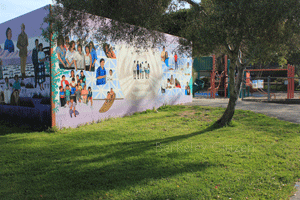 |
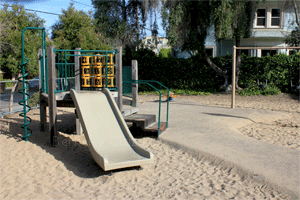 |
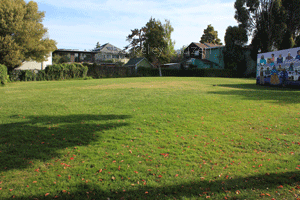 |
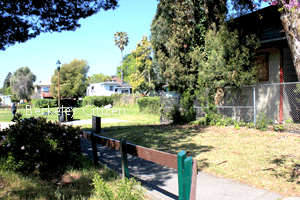 |
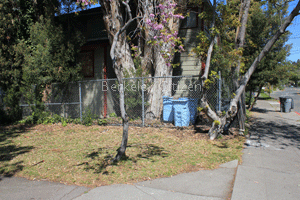 |
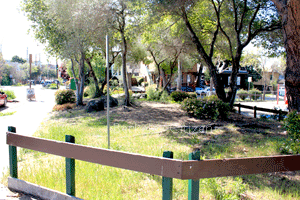 |
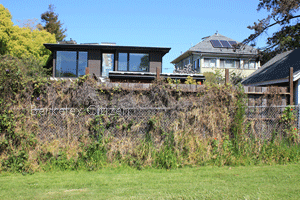 |
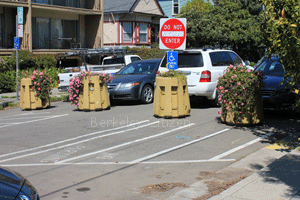 |
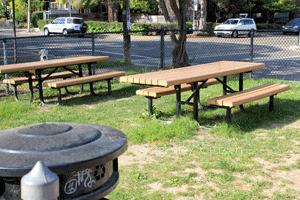 |
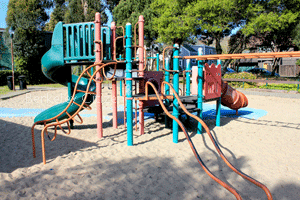 |
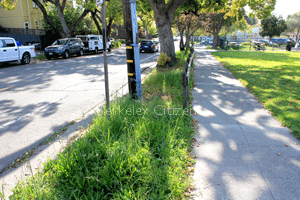 |
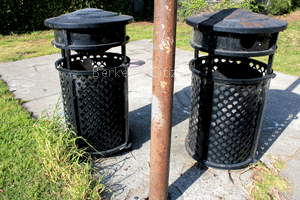 |
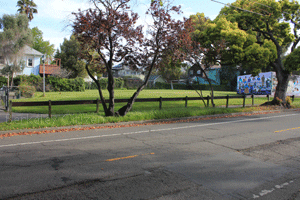 |
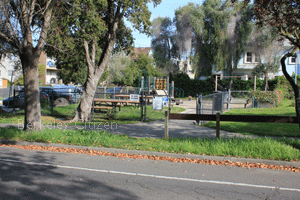 |
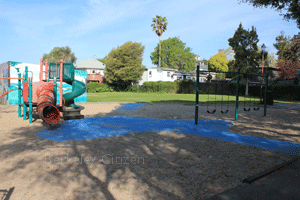 |
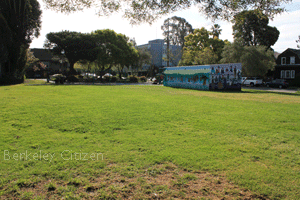 |
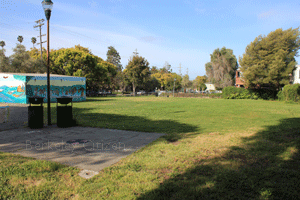 |
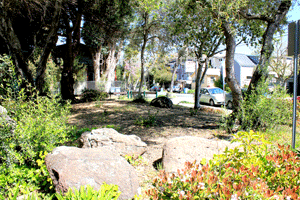 |
All Rights Reserved
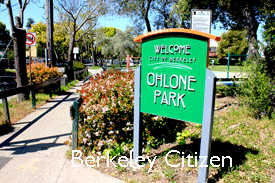 Before the Covid pandemic, a fair assessment of the neighborhood around OPE would have shown that the largest portion of users of this park are older children, UC students and adults. Park consultants might be surprised to know that during the school year, OPE is regularly visited by local private schools in the area, too. Obviously, these students do not use the tot-lot, but rather the open field.
Before the Covid pandemic, a fair assessment of the neighborhood around OPE would have shown that the largest portion of users of this park are older children, UC students and adults. Park consultants might be surprised to know that during the school year, OPE is regularly visited by local private schools in the area, too. Obviously, these students do not use the tot-lot, but rather the open field. 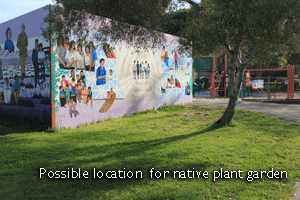 The same can be said for the idea of honoring the Ohlone Native Americans by installing a garden around the utility building. The northern edge of the proposed garden area will obstruct normal field activities by reducing the area of the grassy field. It’s uncertain how the field activities would impact such a garden in this location.
The same can be said for the idea of honoring the Ohlone Native Americans by installing a garden around the utility building. The northern edge of the proposed garden area will obstruct normal field activities by reducing the area of the grassy field. It’s uncertain how the field activities would impact such a garden in this location.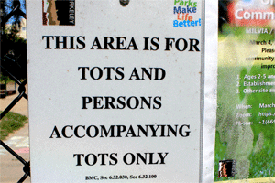 icnic Tables
icnic Tables